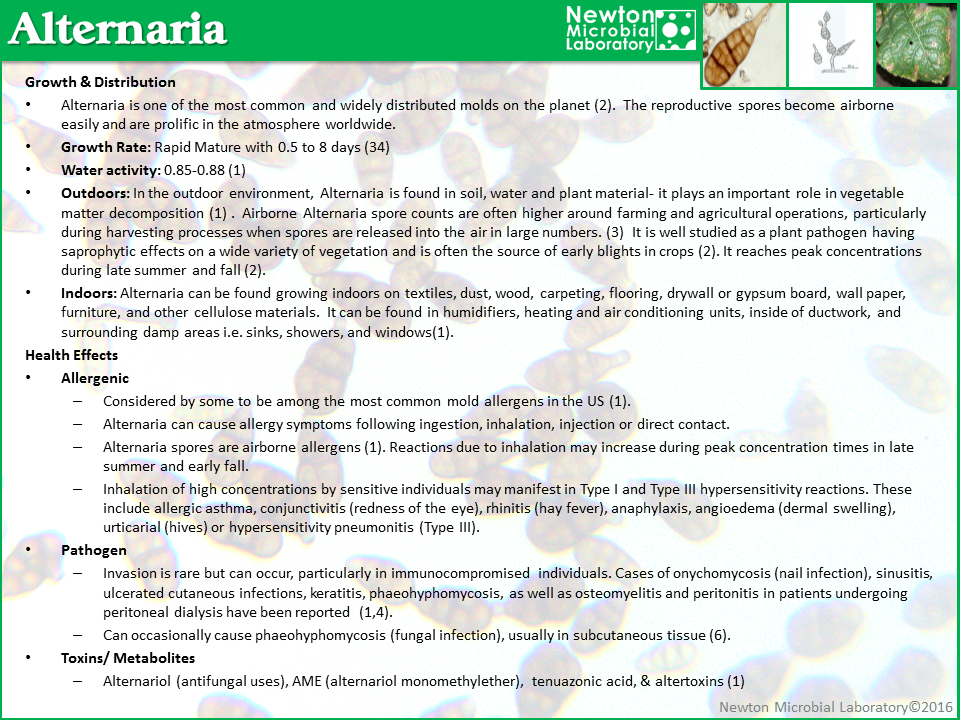Alternaria
Growth & Distribution
Alternaria is one of the most common and widely distributed molds on the planet (2). The reproductive spores become airborne easily and are prolific in the atmosphere worldwide.
Growth Rate: Rapid Mature with 0.5 to 8 days (34)
Water activity: 0.85-0.88 (1)
Outdoors: In the outdoor environment, Alternaria is found in soil, water and plant material- it plays an important role in vegetable matter decomposition (1) . Airborne Alternaria spore counts are often higher around farming and agricultural operations, particularly during harvesting processes when spores are released into the air in large numbers. (3) It is well studied as a plant pathogen having saprophytic effects on a wide variety of vegetation and is often the source of early blights in crops (2). It reaches peak concentrations during late summer and fall (2).
Indoors: Alternaria can be found growing indoors on textiles, dust, wood, carpeting, flooring, drywall or gypsum board, wall paper, furniture, and other cellulose materials. It can be found in humidifiers, heating and air conditioning units, inside of ductwork, and surrounding damp areas i.e. sinks, showers, and windows(1).
Health Effects
Allergenic
Considered by some to be among the most common mold allergens in the US (1).
Alternaria can cause allergy symptoms following ingestion, inhalation, injection or direct contact.
Alternaria spores are airborne allergens (1). Reactions due to inhalation may increase during peak concentration times in late summer and early fall.
Inhalation of high concentrations by sensitive individuals may manifest in Type I and Type III hypersensitivity reactions. These include allergic asthma, conjunctivitis (redness of the eye), rhinitis (hay fever), anaphylaxis, angioedema (dermal swelling), urticarial (hives) or hypersensitivity pneumonitis (Type III).
Pathogen
Invasion is rare but can occur, particularly in immunocompromised individuals. Cases of onychomycosis (nail infection), sinusitis, ulcerated cutaneous infections, keratitis, phaeohyphomycosis, as well as osteomyelitis and peritonitis in patients undergoing peritoneal dialysis have been reported (1,4).
Can occasionally cause phaeohyphomycosis (fungal infection), usually in subcutaneous tissue (6).
Toxins/ Metabolites
Alternariol (antifungal uses), AME (alternariol monomethylether), tenuazonic acid, & altertoxins (1)

